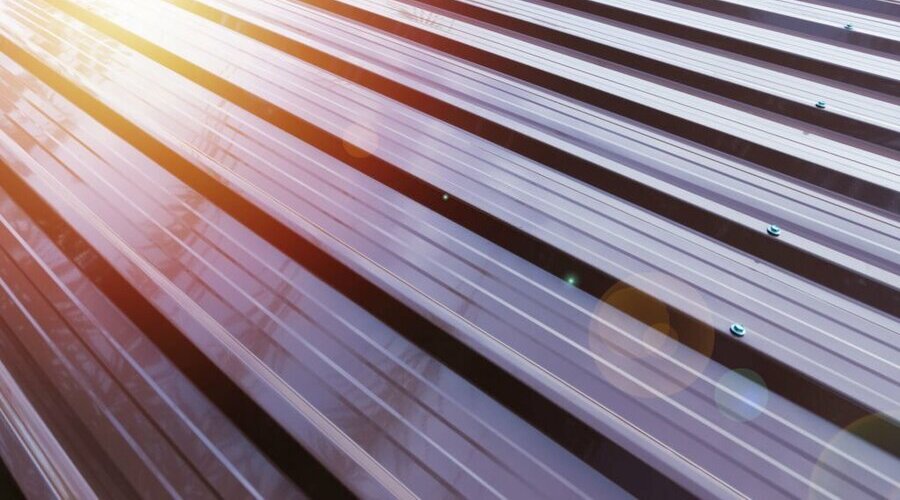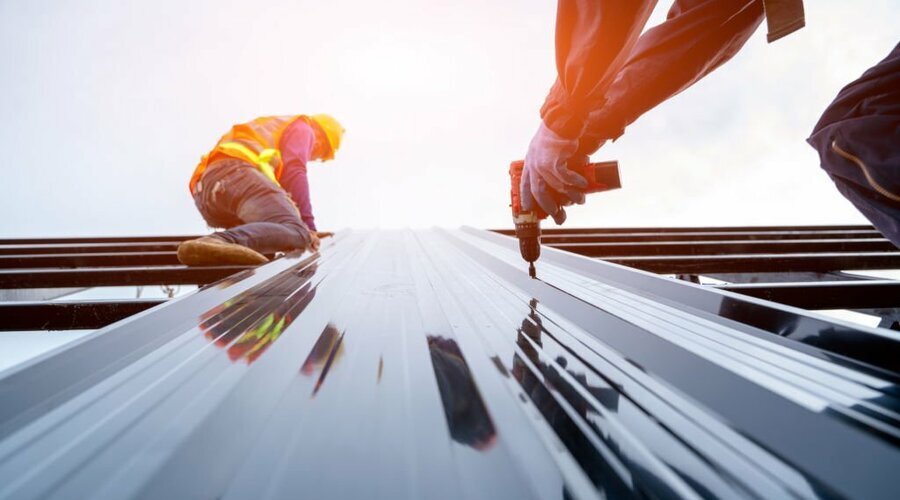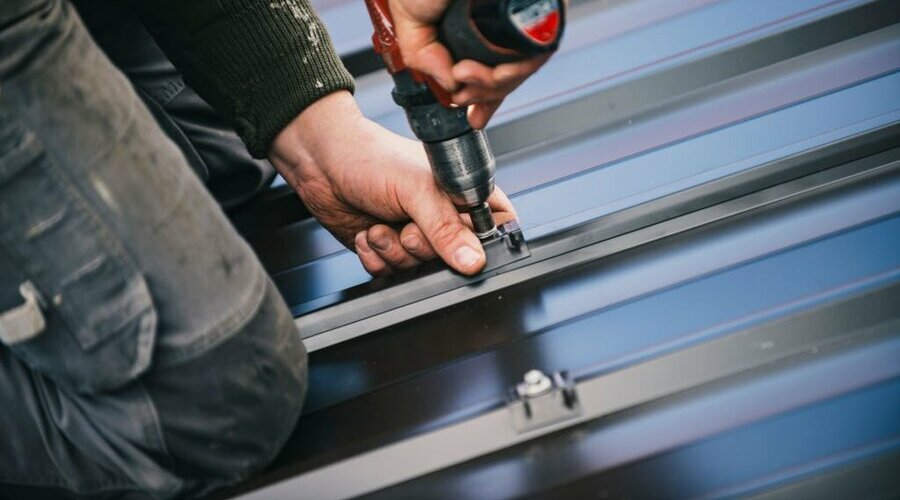A Step-by-Step Guide
Metal roofs are a popular and durable roof type in Australia. Often they are made from strong coated steel roof sheets able to withstand tough weather conditions. However, after years of exposure even quality metal roofs may show signs of damage like peeling, spots, and leak points. When performed properly by experienced roofers, roof restoration extends the roof’s lifespan by 20 years or more vs replacement costs.
Key Takeaways
- Metal roofs can last over 50 years, but may need restoration after 20-30 years due to wear and tear, and leaks.
- The restoration process involves cleaning the roof, priming, painting, and sealing joints.
- Restoring a metal roofing costs $100-250 per square meter on average. It can increase home value and prevent far more expensive replacements.
- Various metal top coatings are available. Polyurethane is longest lasting. Silicone-modified polyester and acrylic coating also perform well.
Why Roof Restoration is Needed in Australia
Rust
Coastal humidity and inland heat combine to cause rust on metal sheets, especially on areas like screws, joints, valleys, and nails. Left untreated can cause leaks or even holes.
Paint Failure
The protective finish on metal sheets may start chipping, cracking, peeling, or fading after 15-25 years. This exposes the metal to corrosion.
Leaks
Over time things like damaged screw gaskets, gaps in joints, hail damage, and stain growth can all cause leaks in an older metal roof. Leaks lead to interior water damage if left unrepaired.
Heat Damage
In Australia’s hot climate, metal roofs can experience heat warping over time. This distorts the profile of roofing sheets causing gaps along joints.
Cost Savings
Restoring an older metal roof is far cheaper than fully replacing it. And it allows postponing a costly replacement for another 20+ years.
The Roof Restoration Process Explained
Step 1 – Thorough Cleaning
The first step is power washing the entire metal roof using a high pressure washer. Any accumulated dirt, grime, salt, pollution, moss growth, or flakes need to be completely removed so the new finish adheres properly. A metal prep solution helps clean off any stubborn iron oxide areas.
Step 2 – Treatment
Next any areas with the growth or corrosion get wire brushed by hand to remove loose roofing material. Then a converting primer or solution is brushed on to transform any remaining stains into an inert protective layer.
Step 3 – Joint Sealing
All roof screw points, flashings, protrusions, joints, and valleys then get fresh sealant applied. This waterproofs any gaps or holes where leaks can occur.
Proper sealing of roof joints during restoration prevents leaks
Step 4 – Priming
Once the roof is fully prepped, a metal primer coating gets rolled or sprayed on. Priming provides maximum adherence for the new topcoat and prevents the growth of any residual stains.
Step 5 – Top Coating
The final step is applying 1-2 coatings of durable, UV resistant metal coating. Silicone-modified polyester and acrylic coating also give great restoration results.
Proper metal restoration takes some work. But repainting the roof along with sealing joints, holes, and leaks results in a roof surface that looks and performs like new.
Cost to Restore a Metal Roof in Australia
On average, costs to restore a roof in Australia range from $100-250 per square meter. Exact prices depend on:
- Roof size and pitch
- Accessibility – height and ease of reach
- Levels and repairs needed
- Coating type used
- Location in Australia
While not cheap, this restores the value and performance of the roof for a fraction of full replacement cost. Restoration also qualifies for capital works write-off deductions in year 1 according to Australian Tax Office regulations if used for an investment property or commercial building.
Selecting the Best Roof Paint for Restoration
Choosing quality engineered for metal roofs is vital to getting long lasting results from restoration work. Key qualities to look for include:
Durability
Withstands sun, heat, rain, salt, and scrubbing without losing adhesion or glossiness. Polyurethanes excel here.
UV resistance
Filters out solar radiation to prevent chalking, fading, and breakdown.
Flexibility
Can expand, contract, and bridge minor surface defects as metal roofs heat up and cool down. Silicones enhance flexibility.
Rust Prevention
Advanced inhibitors limit development of new rust if the coating gets slightly damaged over time.
Popular restoration options include:
- Polyurethanes – Offer the highest durability and longest lasting protection. More complex application requirements.
- Silicone-Modified Polyester – Combines flexibility, glossiness, and 30+ year lifespan. More affordable option.
- Premium Acrylic – Budget friendly acrylics with added silicone, UV blockers, and crosslinkers for 20-30 year performance.
- Single Pack Epoxies – Offer very durable corrosion protection. Require skill to apply correctly.
Maintaining a Restored Metal Roof
To maximise lifespan after restoration, there are some simple maintenance steps that help preserve your roof:
- Remove any debris like leaves or branches from the roof several times per year using a soft bristle broom. Never pressure wash more than once every few years.
- Inspect sealants and screw gaskets every 2-3 years and reseal as needed to prevent new leaks. Pay special attention to protrusions and valley areas that accumulate the most water.
- Test wash a small roof section annually with a weak bleach or detergent solution using low pressure. This slows mold, lichen, or pollution buildup.
- Trim back any overhanging tree branches to prevent abrasion damage from wind swaying.
- Consider applying a maintenance re-coat of durable metal roof every 8-15 years based on condition. This preserves the protective finish.
FAQs
What types of metal roofs are most popular in Australia?
Colorbond® roofs seem to be an extremely popular choice for Australian homes and buildings. Other common metal roofing materials include zinc, copper, and stainless steel sheets. These roofing options are valued for their durability, energy efficiency, and weather resistance.
How can weather impact metal roofs over time?
The hot Australian climate, coastal humidity, severe storms with hail or high winds can all slowly damage metal roofing. This causes rust spots, peeling, leaks, and heat warps that require eventual roof repair and restoration work by a professional roofing contractor.
How often should metal roof inspections happen?
Industry experts recommend thoroughly inspecting them at least once or twice per year for any early signs of new deterioration or damage. This allows catching small issues before they become serious, expensive problems requiring full roof replacement.
What safety gear is essential when pressure washing or restoring roofs?
Proper safety equipment like harnesses, helmets, heavy duty gloves, protective goggles, non-slip boots, and fall protection anchors should always be utilised by professional roofing companies when pressure cleaning or performing restoration work on metal roofs. This minimises risks to workers at heights.
Conclusion
Roof restoration for metal sheets done right can bring an aging, damaged metal roof back to its original appearance and function. The process involves proper installation of seals and gaskets to stop leaks, intense cleaning and rust treatment to prepare the surface, priming for maximum adhesion, and quality metal roof painting using durable modern coatings in updated colours. Contact reputable metal roofing companies in your area for quotes on restoring versus replacing your roof.



